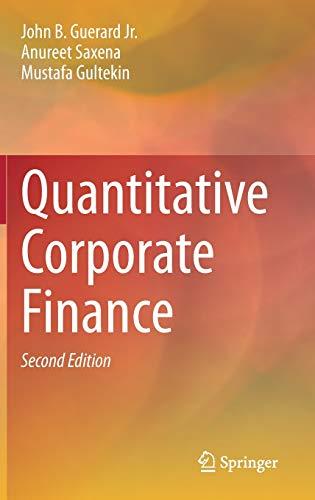Firm 1 is a multi-country company. It is monopoly in country 1 and competes with firm 2 in country 2. In stage 1, firm 1 can spend in persuasive advertising in country 1 that shifts demand in country 1. Specifically, the inverse demand in country 1 is = 1 + 1, where is firm1s advertising spending, and 1 is its output in country 1. Firm 1s choice of is observable to both firms in stage 2. Let 1, 1, 2 be firm 1s output in country 1, firm 1s output in country 2 and firm 2s output in country 2, respectively. In stage 2, firm 1 chooses (1, 1) and firm 2 chooses its output (2) simultaneously. The inverse demand in country 2 is = 1 1 2. Firm 1s production cost depends on the sum of its outputs in the two counties: the total production cost is (1+1)2 2 . Firm 2s production cost is given by 2 2 2 . (a) Because firm 1s technology exhibits decreasing returns to scale, the equilibrium (1 (), 1 (), 2 ()) depends on firm 1s advertising spending . Compute 1 () and 2 (). (b) Does the advertising spending in country 1 make firm 1 tough or soft? (c) Is the strategic effect of advertising spending positive or negative? What is the strategy in the dog and cat taxonomy of strategy behaviors? (d) What is the intuition for the strategic effect to be positive or negative? (e) What strategy will firm 1 play if its production technology exhibits increasing return to scale instead? Please give an intuitive argument as that in (d).

Firm 1 is a multi-country company. It is monopoly in country 1 and competes with firm 2 in country 2. In stage 1 , firm 1 can spend K in persuasive advertising in country 1 that shifts demand in country 1. Specifically, the inverse demand in country 1 is p=1+Kx1, where K is firml's advertising spending, and x1 is its output in country 1 . Firm 1's choice of K is observable to both firms in stage 2 . Let x1,q1,q2 be firm 1's output in country 1, firm 1's output in country 2 and firm 2's output in country 2, respectively. In stage 2, firm 1 chooses (x1,q1) and firm 2 chooses its output (q2) simultaneously. The inverse demand in country 2 is p=1q1q2. Firm 1's production cost depends on the sum of its outputs in the two counties: the total production cost is 2(x1+q1)2. Firm 2's production cost is given by 2q22. (a) Because firm 1's technology exhibits decreasing returns to scale, the equilibrium (x1(K),q1(K),q2(K)) depends on firm 1's advertising spending K. Compute q1(K) and q2(K). (b) Does the advertising spending in country 1 make firm 1 tough or soft? (c) Is the strategic effect of advertising spending positive or negative? What is the strategy in the "dog and cat" taxonomy of strategy behaviors? (d) What is the intuition for the strategic effect to be positive or negative? (e) What strategy will firm 1 play if its production technology exhibits increasing return to scale instead? Please give an intuitive argument as that in (d). Firm 1 is a multi-country company. It is monopoly in country 1 and competes with firm 2 in country 2. In stage 1 , firm 1 can spend K in persuasive advertising in country 1 that shifts demand in country 1. Specifically, the inverse demand in country 1 is p=1+Kx1, where K is firml's advertising spending, and x1 is its output in country 1 . Firm 1's choice of K is observable to both firms in stage 2 . Let x1,q1,q2 be firm 1's output in country 1, firm 1's output in country 2 and firm 2's output in country 2, respectively. In stage 2, firm 1 chooses (x1,q1) and firm 2 chooses its output (q2) simultaneously. The inverse demand in country 2 is p=1q1q2. Firm 1's production cost depends on the sum of its outputs in the two counties: the total production cost is 2(x1+q1)2. Firm 2's production cost is given by 2q22. (a) Because firm 1's technology exhibits decreasing returns to scale, the equilibrium (x1(K),q1(K),q2(K)) depends on firm 1's advertising spending K. Compute q1(K) and q2(K). (b) Does the advertising spending in country 1 make firm 1 tough or soft? (c) Is the strategic effect of advertising spending positive or negative? What is the strategy in the "dog and cat" taxonomy of strategy behaviors? (d) What is the intuition for the strategic effect to be positive or negative? (e) What strategy will firm 1 play if its production technology exhibits increasing return to scale instead? Please give an intuitive argument as that in (d)







